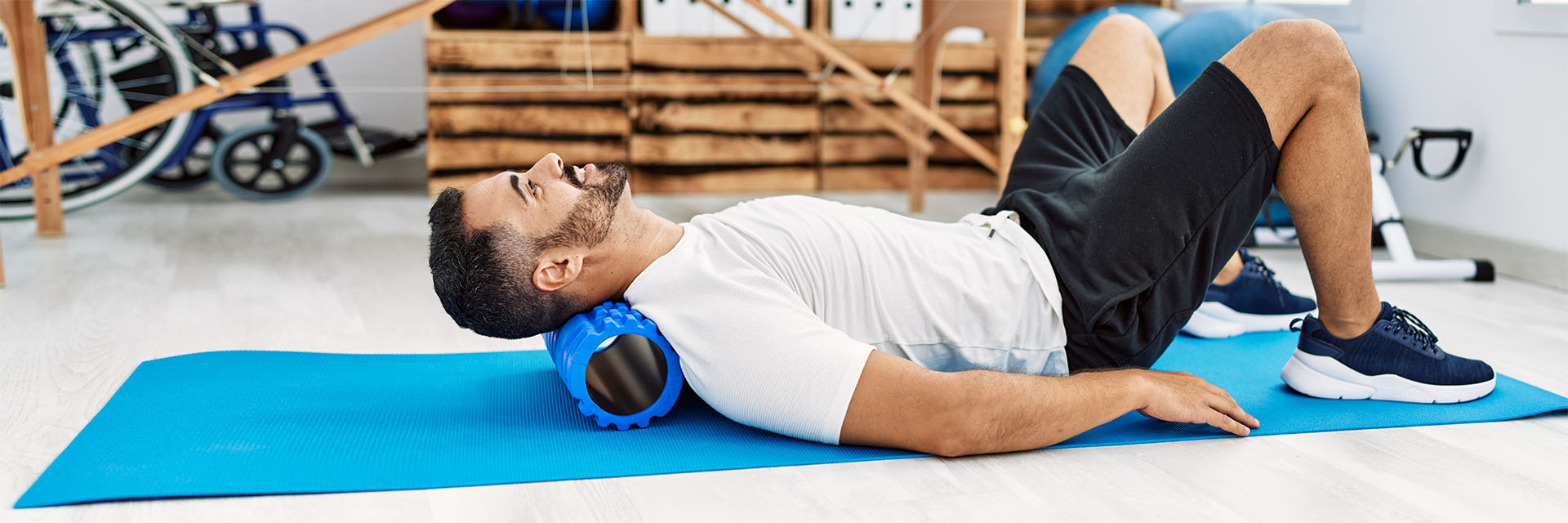After a tough workout, few things feel better than getting out of the gym and into a hot shower or on to a satisfying post-workout meal. So much so that you may even skip stretching and cooling down first. If you’re guilty of doing this, you’re not alone; we've all been there. But cooling down properly is crucial for your body's recovery. And before you roll your eyes, think of it like slamming on your car brakes when going 60 mph. Abruptly stopping your workout can be just as jarring for your body, even if you’re exhausted.
Cooling down helps your heart rate decrease gradually and sets the stage for effective recovery. Including static stretching or foam rolling during your cooldown gives your tired muscles the care they need.
Even though it only takes a few minutes, many people skip this essential step. Before hitting the showers, take 5 to 10 minutes to cool down. Here are some common mistakes to avoid to stay healthy and ready for your next workout.
Stopping Your Workout Suddenly
We’ve all been there. You’re in the middle of your workout and you’re just…over it. You may feel like it’s a better use of your time to just pack up and go home but abruptly ending your workout can hinder your recovery. And we all know that a sore body can make you even less likely to want to hit the gym the next day.
A proper cooldown helps return your body temperature and blood pressure to pre-exercise levels and kick-starts the regeneration process. According to the American College of Sports Medicine, a gradual decrease in intensity, known as active cooldown, will help calm the body and mind and should be included in every workout routine.
Additionally, active cooldown reduces your heart rate gradually, preventing dizziness. It also prevents blood pooling, avoiding fainting or cramping.
What to do: Gradually decrease your intensity. If you're running, transition to a jog, then a brisk walk, and finally to a slower walk. Some machines may already have this feature built-in after you hit “Stop Workout.” In group exercise classes, follow the instructor's cooldown routine, which usually includes lighter activities and stretching. After strength training, spend a few minutes doing light cardio, like walking or cycling at a gentle pace. Additionally, stretch the muscle groups you worked during your exercise to help relax your muscles and prevent stiffness.
Not Stretching Properly
Muscle soreness often causes people to skip workouts. Proper stretching after exercise can significantly alleviate this soreness, allowing for a quicker and more comfortable recovery. When you exercise intensely, your muscles experience micro-tears, and lactic acid builds up, contributing to the stiffness and pain you feel afterward. Stretching helps to increase blood flow and oxygen to these tired muscles, aiding in the repair process and reducing the buildup of lactic acid.
What to do: Aim for two to four rounds of 15 to 30 seconds of stretching for each muscle group you trained. Make sure to breathe deeply and relax into each stretch. Stretching should never be painful; if you experience pain, ease off the stretch or consult a qualified professional, such as a personal trainer or sports medicine physician.
Not Using a Foam Roller
If you haven't tried foam rolling yet, now is the time. Research published in the Journal of Athletic Training indicates that foam rolling can enhance joint range of motion, reduce muscle soreness, and speed up recovery. It allows you to self-massage tight muscles and target trigger points.
What to do: Again, you’ll want to focus on the muscles you worked during your session. For instance, after lower-body exercises like squats and lunges, roll your quads, hamstrings, hips, and calves. Position the roller under the targeted muscle and use your body weight to control the pressure. Roll back and forth a few inches, stopping at tight spots.
Foam rollers are affordable and widely available. When purchasing one, consider the density: medium-density rollers are less painful, while high-density rollers penetrate deeper into the tissue but may be more uncomfortable.
Not Cooling Down After Every Workout
Yes, we said every workout. While you might occasionally get away with a shorter cooldown, it’s important to include at least five minutes of active recovery after each session. During exercise, your body goes through various stressful processes, including the breakdown of chemicals that can lead to muscle soreness. An active recovery cooldown, followed by stretching, helps kickstart the repair process and minimize soreness.
What to do: Save the last five to ten minutes of your workout for cooldown. For instance, if you have an hour to exercise, dedicate the first three to five minutes to warm up, the next 45 to 50 minutes to the main workout, and the final five to ten minutes to an active cooldown that includes stretching and foam rolling. It’s also a good idea to adjust your cooldown based on exercise intensity and duration.
The Takeaway
By avoiding these common cooldown mistakes, you’ll boost your recovery and keep your body ready for future workouts. Think of your cooldown as a crucial part of your fitness routine, not just the end of your session. Gradually easing out of your workout helps your heart rate return to normal, reduces muscle soreness, and improves flexibility.
Incorporating practices like a gradual decrease in intensity, proper stretching, and foam rolling will not only help you feel better right after your workout but also support your long-term progress. This thoughtful approach helps prevent injuries, reduce stiffness, and speed up muscle recovery, making your next workout more enjoyable and effective.
By making these cooldown steps a regular part of your routine, you’ll be setting yourself up for success, ensuring your body is prepared and energized for whatever challenge comes next. This way, you can keep making steady progress and enjoy your fitness journey even more.

